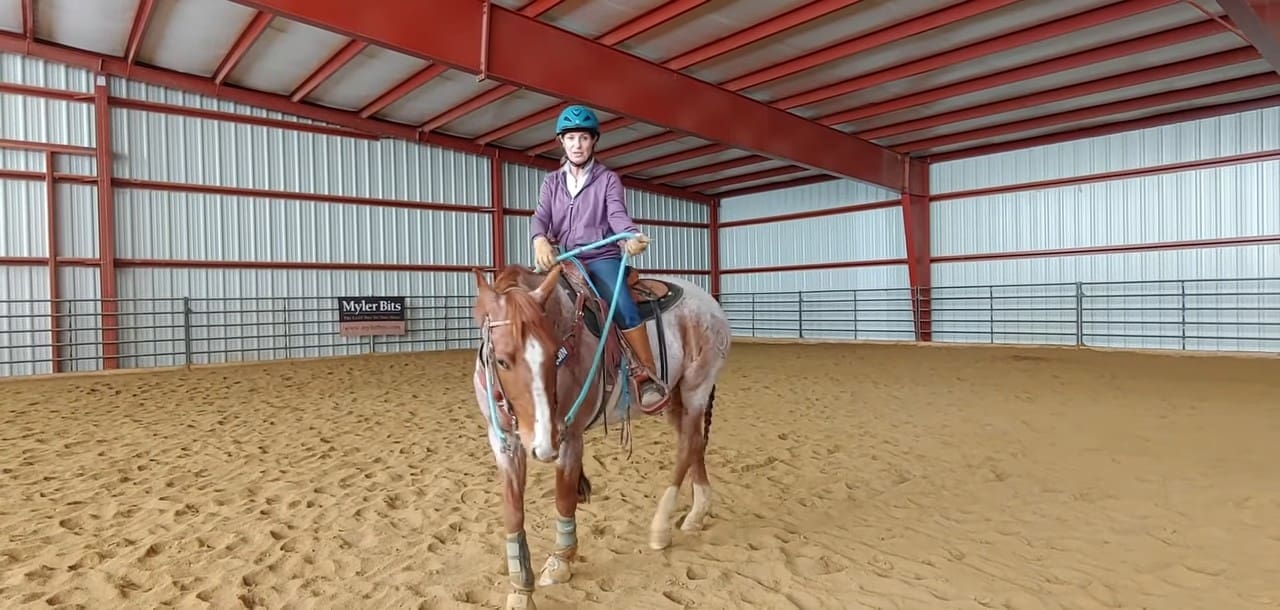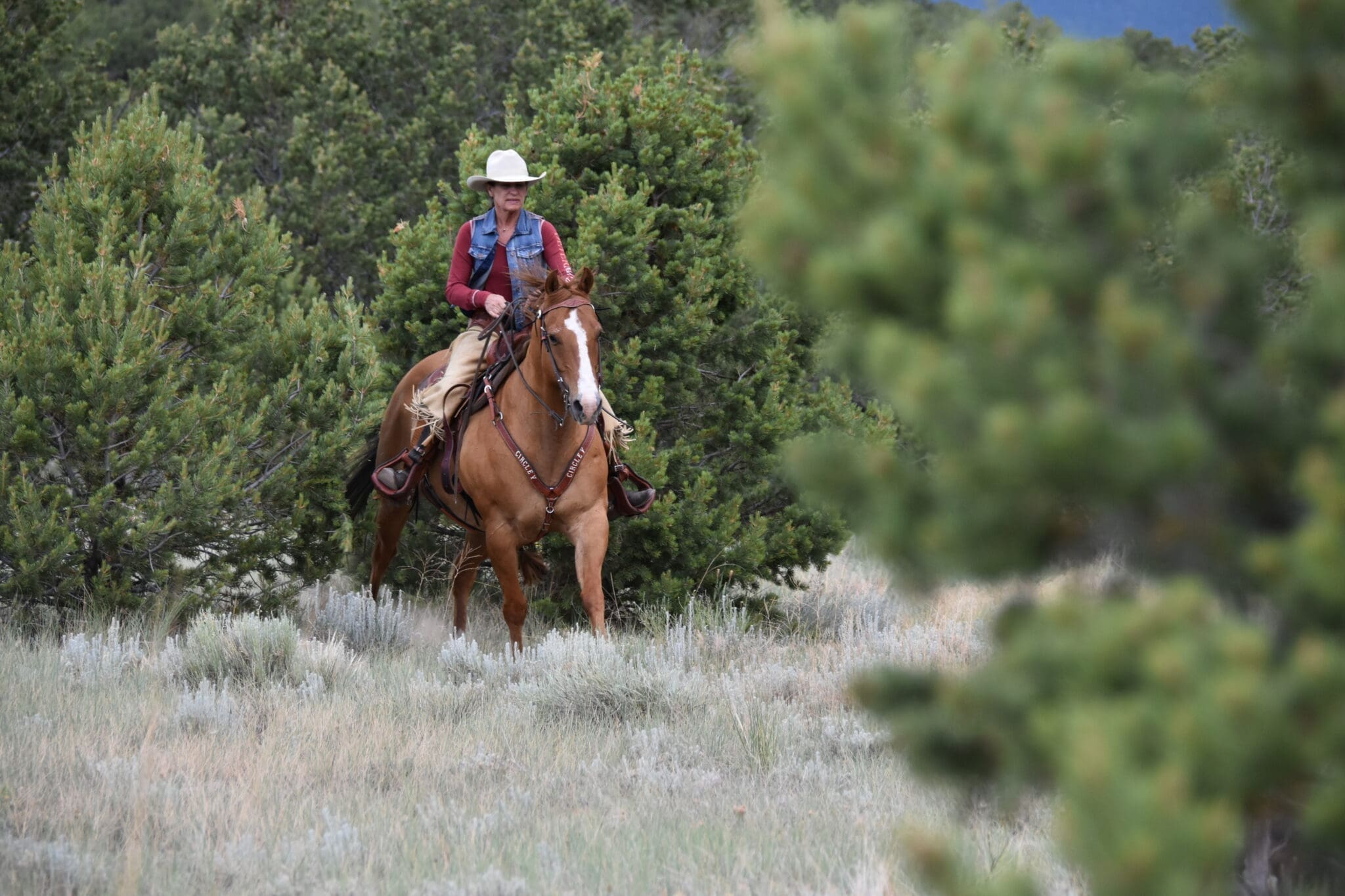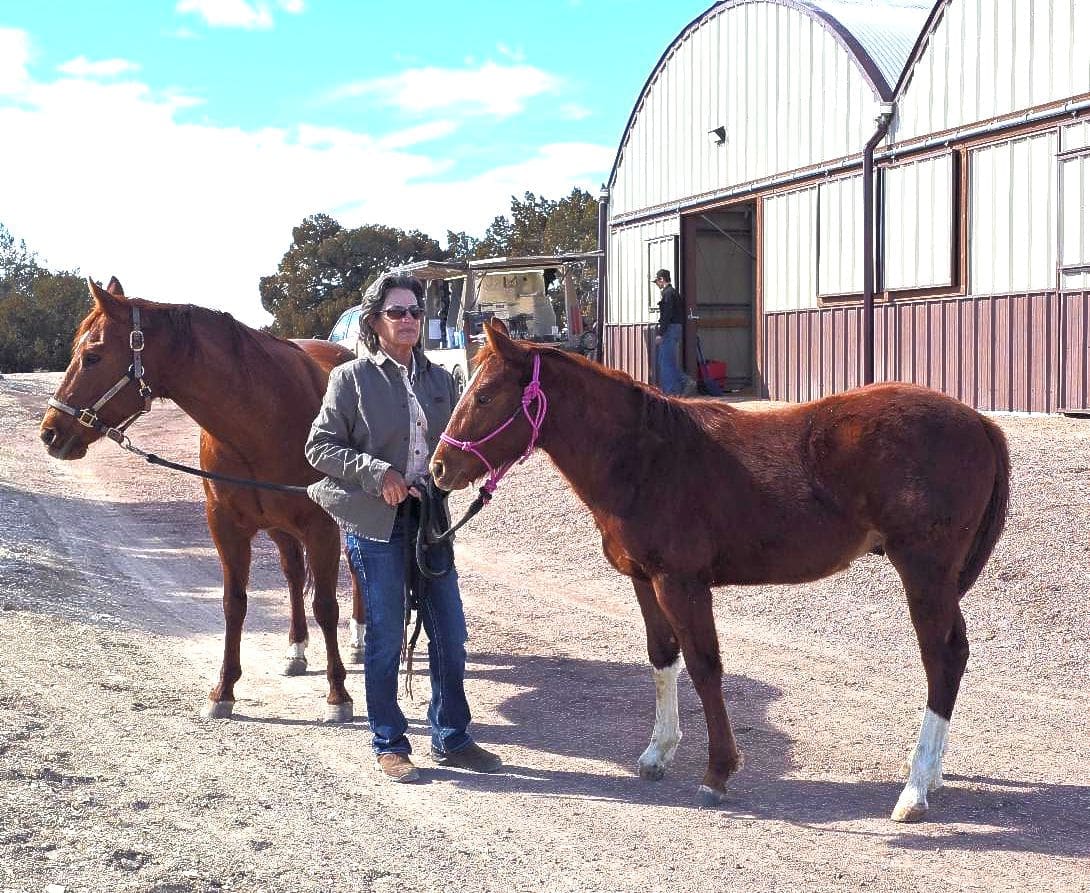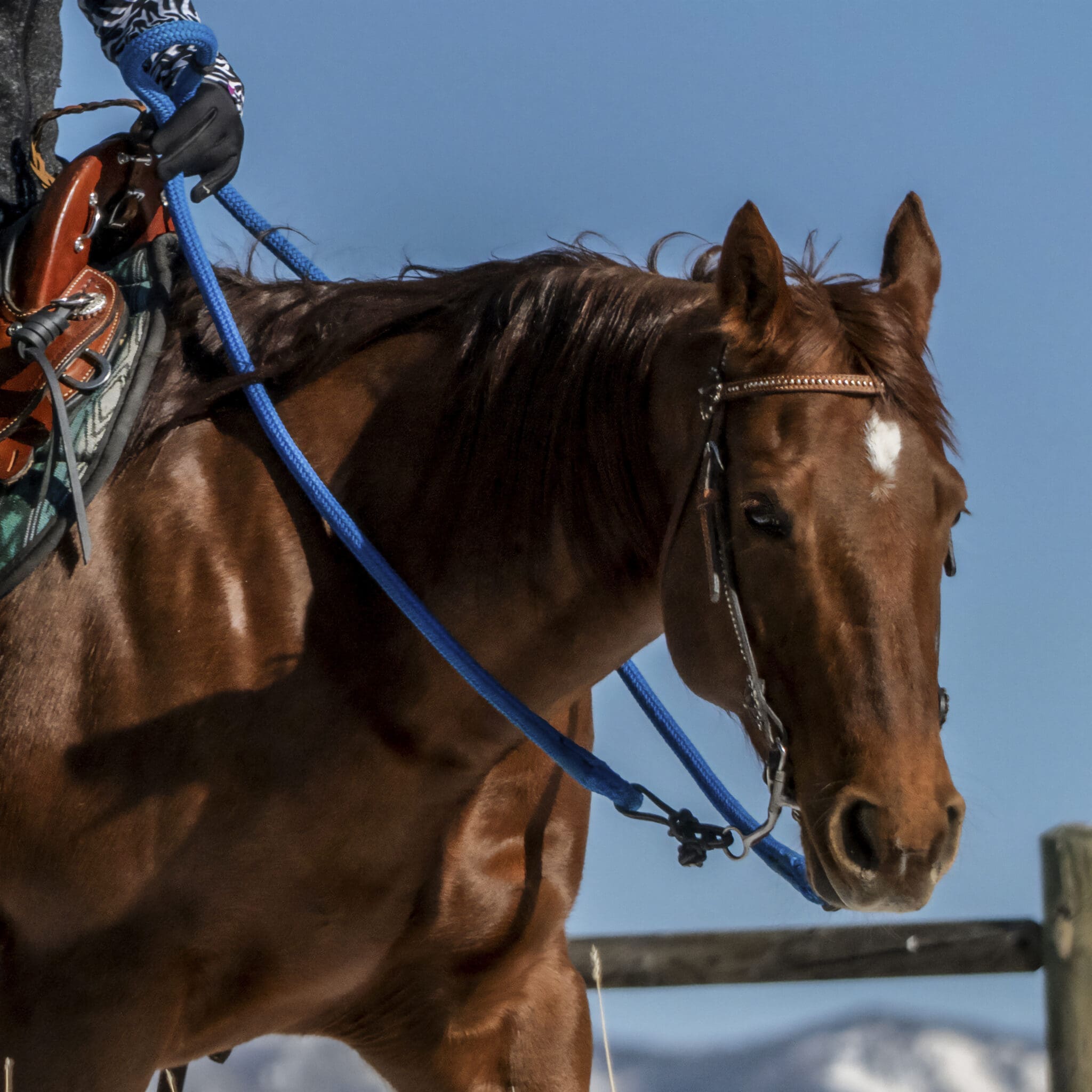Question Category: Issues from the Ground
Question: How do I train my horse to be a perfect citizen for the vet so that he gets gentle handling and is well-liked (and well-treated) by my vet?
Answer: HANDS-ON
The Best Patient
Teach your horse ground manners to enhance every veterinary visit with these strategies from noted clinician Julie Goodnight.
Story by Heidi Nyland
If your horse is well-trained, well-behaved and easy to work with, you’ll make your veterinarian’s job much easier and more effective. Even the best veterinarian must struggle to examine a horse that’s stomping, biting, moving away or just not cooperating.
While you might blame your horse’s “sudden” behavioral problems on sickness or pain, chances are, your ill-mannered patient hasn’t learned how to look to you for leadership and guidance. If he learns to follow your every command when he’s well, he’ll respect your cues when he’s hurt or when it’s time for an important examination.
We met up with respected trainer and clinician Julie Goodnight to find out the manners your horse should learn to make veterinary exams a breeze. She believes you must be your horse’s “captain” at all times to gain and maintain his respect. If he knows that you’re the herd leader, he’ll look to you for guidance in any situation, even when he’s uncomfortable, hurt or fearful.
Goodnight has witnessed many horse owners handle their horses during veterinary visits. She’s seen the bites and kicks that could’ve been avoided. “While most veterinarians love all horses, most have a few favorite clients—it’s just human nature,” she says. “When your horse is well-mannered and you know how to handle him properly, you’ll make your vet’s job easier. He or she will enjoy working on your well-trained partner.
“Proper training might also boost your horse’s chance for a healthy outcome,” Goodnight continues. “Your vet will be able to thoroughly examine a horse that stands still without fidgeting and allows touch. Plus, the best-trained horses often don’t need mechanical restraints or extra sedatives for veterinary work, which can save you money and save your horse from potential sedative side effects.”
While your vet wants to do what’s best for your horse and will perform the necessary examinations, diagnostics and treatments no matter how your horse behaves, he or she will appreciate your mannered horse and will gain respect for your horsemanship.
Here’s how to teach your horse four lessons in ground manners: hold still; accept touch; place each step; and match your pace. (Note: As you teach your horse these lessons, always stay safe; if you have any problems, ask a qualified trainer or certified riding instructor to help you.)
Lesson Prep
You’ll need: A rope halter (to place pressure on your horse’s poll and sensitive facial areas); a long lead rope (at least 12 feet long, so you can command your horse from far away) with a knot to connect it to the halter instead of a metal closure (the knot will allow your horse feel a correction without causing undue pain); leather gloves; flag or whip/longe whip. Get your Halter/Lead and Training Flag
(bul) Before you begin: Choose a time to work with your horse when he’s fed, rested and wants to move. “Begin your practice when other horses are leaving the arena or your horse is next to be turned out,” Goodnight suggests.
Lesson #1: Hold Still
How it helps your vet: Your veterinarian will need your horse to stand still for examinations, injections and other procedures. If your horse stands still with his nose in front of his chest, he won’t interrupt your vet’s work by nudging or biting.
“You have to have a relationship with your horse,” notes Goodnight. “You have to have authority over him even when he’s scared, agitated or hurt. You might think you can hold him up close and keep him still, but you’re just not strong enough. You need to make him want to stand still.” Training technique: Select a point several yards away where you’d like him to stand. Walk him to that point, and say “whoa.” Step away at a 45-degree angle from where his nose is pointing, so you’ll be in front, but safely off to the side if he does move on.
Once in place, point your toes toward your horse’s nose. Allow the rope to drape, holding it near the end. Stay still as long as he keeps his feet in place and doesn’t move his head from side to side. If he does, it’s time for a correction. Note that the lesson will go more quickly if he realizes his mission and can associate what he does just before a correction comes.
Start the correction by waving the rope up and down about one foot so that the movement travels through the line and affects the halter knot. Make one correction, then allow your horse to lower his head and stand still again. If he picks up a foot or turns his head to the side, correct again. Be consistent with your corrections until he learns the new rule.
Next, face your horse with your feet pointed toward him. He shouldn’t move at all. Your physical presence and your leadership should keep him still. If he moves, lead him back to where he started. If you allow him to move, for instance, one step toward the gate, you’ll reward him for moving, rather than standing still. He should stand just where you tell him, until you cue him otherwise.
“You’re really teaching your horse to ground tie,” Goodnight says. As your horse begins to figure out his ground-tying lesson, back up even more, and lay a portion of the rope on the ground between corrections.
Lesson #2: Accept Touch
How it helps your vet: Your veterinarian will need to look in your horse’s mouth, ears, eyes and other sensitive areas during routine exams or if your horse becomes ill, sore or injured. If your horse isn’t used to having his sensitive parts touched, he might pull away and make an exam difficult. Here, we’ll focus on the mouth to prepare him for oral exams and dental work. “I’ve taught several of my horses to accept this pressure in their mouths so well that my vet doesn’t need to sedate before teeth floating,” Goodnight notes. Training technique: Your horse needs to learn that if he accepts touch, the touch will soon go away—that it’s easier to stand still and accept the touch instead of fighting.
Don leather gloves, stand at your horse’s left side, and place two fingers at the left corner of his lip. He should open his mouth slightly. Move your fingers slightly back and into his mouth, avoiding his front and back teeth. He’ll most likely shake his head and pull away from your touch, but keep your fingers in place no matter where he pulls you.
Watch for an instant of relaxation. As soon as your horse lowers his head or stops resisting, pull your hand away. Keep the pressure until he accepts it, then remove your hand immediately. Repeat the process until he allows you to open his mouth from both sides without resistance.
Use this same technique to teach your horse to accept your touch on other parts of his face and body.
Lesson # 3: Place Each Step
How it helps your vet: If your horse needs a flexion test during a lameness exam, your veterinarian will need to pick up and hold your horse’s foot and leg without resistance or leaning. If your horse needs a radiograph (X-ray) or magnetic resonance imaging (MRI), he’ll have to place his foot on a small plate. Many horses are taught how to pick up their feet, but not how to hold them up or put them down with finesse. Your horse needs to trust you to hold his foot, then gently place it down onto any surface.
Training technique: Have a helper hold your horse, or tie your horse to a sturdy post. Stand at your horse’s left shoulder, facing his hindquarters. Place your left hand on his left shoulder, and lightly move it toward his fetlock. With your thumb and index finger, gently squeeze the tendon just above his fetlock joint.
When your horse picks up his foot, lift it so his lower leg is parallel to the ground, then hold that position. If you feel him squirm or pull away, maintain your hold, moving with him until he relaxes.
When your horse relaxes and accepts the foot hold, gently lower his foot to the ground, and place it in a precise spot. Don’t let go or drop his leg. If you do, he’ll learn that he can place his foot wherever he chooses, not where you or your vet needs it to be.
Repeat this exercise several times on each leg. When your horse understands that you’ll put his foot down when he’s relaxed, experiment with new foot-placement locations. Pick up his foot and place it on a block, piece of paper, a flat rock—whatever you can find that may mimic an item in your veterinarian’s clinic.
Lesson #4: Match Your Pace
How it helps your vet: During a lameness exam, your veterinarian will need to see your horse’s movement at a walk and trot. If your horse is pokey while you lead him, clinic staff will have to work extra hard to get your horse to move at an even cadence. If your horse moves smoothly and at the speed you request, your vet will likely be better able to see a change in stride and pinpoint the lameness.
Training technique: Work in an arena or other area with flat, consistent footing. Stand at your horse’s left shoulder, facing front, holding the lead rope about a foot from the halter. You don’t want to pull your horse forward, you want your horse to learn to match your step and follow your lead.
Walk forward a few steps, leading your horse at a walk, keeping his head just behind your shoulder. Then jog in an animated way to cue your horse to pick up the trot. If he does so, increase your pace. If he moves at your pace without lagging behind, allow him to rest as a reward. Then repeat the exercise until you know he’ll respond well to your trot cue.
If your horse is sluggish, ask a helper to jog along behind your horse waving a flag or whip/longe whip to prompt your horse to go forward. (Make sure your helper stays off to the side and out of your horse’s kicking zone; remind him or her to avoid actually touching your horse.)
Ask your horse to move on again, with your helper to reinforcing your trot cues. As soon as your horse moves forward easily, allow him to rest as a reward. Make sure he stops on your command or when you stop, not when he thinks it’s time.
Continue to trot your horse up and down the work area until he’ll stay at your speed without the prompt. When he’s cooperative, trot him in circles to make sure the change of direction doesn’t slow him down. You’ll get a good workout, while your horse gets ready for potential lameness exam.
Copyright ©Julie Goodnight 2000. All Rights Reserved. No part of this website may be reproduced without owner’s express consent.



